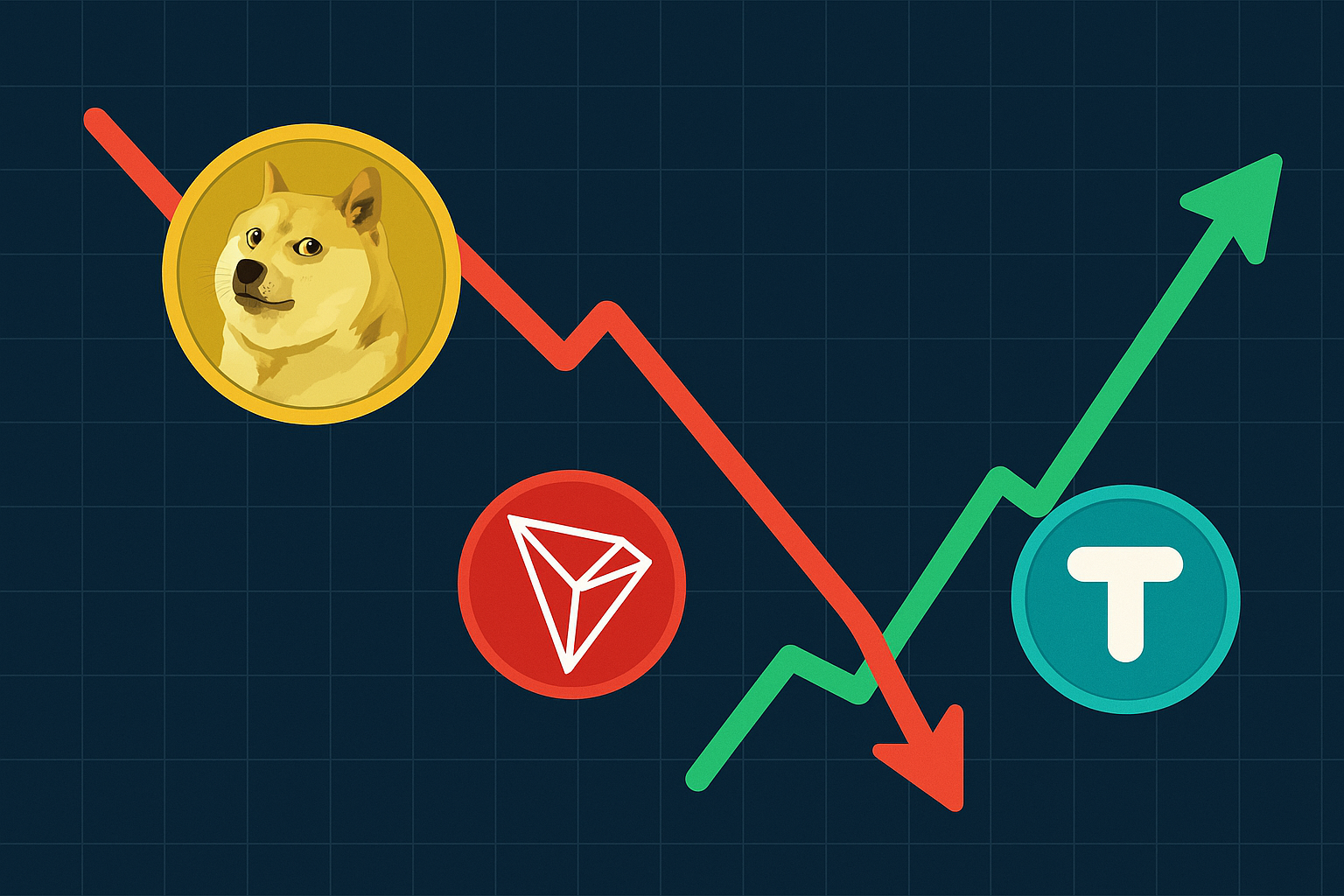Hyperion DeFi Appoints David Knox As Chief Financial Officer To Strengthen Governance And Institutional Bridge
Introduction
On September 29, 2025, Hyperion DeFi, Inc. announced a significant leadership hire: David Knox has been appointed as Chief Financial Officer, effective immediately. This move marks a turning point in Hyperion DeFi’s evolution, reflecting its ambition to strengthen governance, bolster institutional credibility, and accelerate its decentralized finance strategy. The company describes itself as the first U.S. publicly listed entity building a long-term strategic treasury of the Hyperliquid platform’s native token, HYPE. The appointment of a seasoned executive from the finance and fintech world signals a deeper commitment toward blending traditional capital markets and on-chain innovation.
David Knox: Background And Credentials
David Knox arrives at Hyperion DeFi with a track record in capital markets, financial services, and executive leadership. Prior to joining Hyperion, he served at PayPal as Head of Capital Markets and as Head of Finance for Global Credit and Financial Services. In those roles, Knox oversaw lending segments under a balance sheet light strategy, managed financial planning and analysis, and worked to scale financial services operations with rigorous governance and operational discipline.
Before his tenure at PayPal, Knox held roles in capital markets structuring and advisory at Cantor Fitzgerald, where he engaged in mortgage-backed and asset-backed finance. He also served in senior positions at SoFi, Hudson Advisors, and the Royal Bank of Scotland. He holds a bachelor’s degree from the University of Connecticut and is an alumnus of Harvard Business School.
His experience spans structuring complex financial instruments, managing risk, scaling financial operations, and interfacing with institutional actors—skills that will be critical as Hyperion seeks to elevate its stature in DeFi and institutional finance.
Hyperion DeFi’s Mission, Model, And Positioning
What Is Hyperion DeFi?
Hyperion DeFi positions itself as a public company bridging traditional finance and crypto. Its core strategy is to build a strategic treasury of HYPE, the native token of the Hyperliquid blockchain. Through this treasury model, the company aims to give shareholders exposure to yield and utility derived from the Hyperliquid ecosystem, including staking, fees, and on-chain activity.
Hyperliquid itself is a novel Layer 1 blockchain optimized for high-frequency trading and low-latency on-chain order books. The network supports spot and perpetual futures trading, with every order, cancellation, trade, and liquidation happening within very short block times. It also supports a smart contract environment called HyperEVM that enables permissionless DeFi applications.
The HYPE token is core to Hyperliquid’s incentive and fee model. Users who stake HYPE receive reduced trading fees and referral bonuses. Meanwhile, the protocol autonomously purchases and sequesters HYPE using trading fees generated on its markets. As of September 2025, over 30 million HYPE tokens had been sequestered, making HYPE one of the largest cryptocurrencies by market capitalization.
Why Does The Treasury Approach Matters?
Hyperion DeFi’s model is somewhat unconventional in the crypto space. Rather than operating purely as a protocol or a trading platform, it is a public company whose balance sheet is an on-chain treasury of crypto assets, specifically HYPE. The idea is that as the Hyperliquid ecosystem grows, the value and yield of those holdings will accrue to Hyperion shareholders.
This model attempts to bridge two worlds: the corporate market with shareholders and reporting requirements, and decentralized finance with token economies and on-chain yields. The challenge is to maintain integrity, transparency, and strategic alignment between the public markets and a dynamic crypto protocol environment.
Strategic Rationale Behind The Appointment
Enhancing Governance and Credibility
One of the major signals behind the hiring of David Knox is governance. As a public company operating in the volatile and often opaque crypto realm, Hyperion needs credible financial leadership to satisfy both regulators and institutional investors. Knox’s background in capital markets and financial controls positions him as a stabilizing force. The appointment is explicitly framed as a step to strengthen governance alongside accelerating DeFi strategy.
Accelerating Institutional Adoption
Hyperion DeFi appears intent on acting as a bridge for institutional capital into blockchain assets. Knox, with his network and experience in traditional finance, aims to leverage his relationships in fixed income, structured products, and capital markets to attract institutional interest in the Hyperliquid ecosystem. He has explicitly stated a goal to position Hyperion DeFi as the bridge between Wall Street and the decentralized future.
Aligning Interests via Equity Incentives
To align his incentives with company performance, Hyperion granted Knox 100,000 restricted stock units as an inducement grant. These will vest in two equal installments at six months and twelve months, subject to his continued employment. This equity-based incentive shows a commitment to tying his success to that of the company and shareholders.
Timing Amid Market Conditions
This leadership change arrives at a moment when the broader crypto markets are under scrutiny, institutional adoption remains nascent, and regulatory pressure is growing. By embedding more institutional-grade finance talent, Hyperion is signaling that it wants to move beyond speculative narratives and toward serious, sustainable financial infrastructure.
Opportunities And Potential Upsides
Institutional Capital Inflow
With Knox leading financial strategy, Hyperion may successfully court institutional asset managers and family offices seeking regulated exposure to crypto infrastructure. His credibility and contacts could help open doors that might otherwise remain closed in DeFi circles.
Stronger Financial Discipline
Knox’s operational experience at PayPal and prior institutions may lead to more rigorous internal controls, risk management, and financial planning—areas that many purely decentralized projects often lack. That discipline can reduce volatility, improve investor confidence, and lead to more sustainable growth.
Growth of the HYPE Economy
If Hyperliquid continues to grow, the staking, turnover, and fee dynamics of HYPE could provide an engine of revenue and yield that benefits both the protocol and Hyperion’s treasury. The more utility and adoption HYPE sees, the more favorable things look for Hyperion as a treasury-backed entity.
Enhanced Narrative and Brand
This appointment strengthens Hyperion’s narrative: a hybrid between Wall Street and Web3. In a crowded DeFi space, it gives the company a credible differentiator. This could help in fundraising, partnerships, and token holder trust.
Challenges, Risks, And Unknowns
Shareholder Dilution and Stock Compensation
While the RSU allocation is intended to align interests, it also raises concerns about dilution. If Hyperion leans heavily on stock-based incentives to attract talent, this may erode shareholder value over time. Investors will be watching closely.
Regulatory and Compliance Risk
Operating as a U.S. publicly listed company with embedded crypto assets introduces regulatory complexity. Securities laws, SEC oversight, accounting for digital assets, and disclosures can be particularly tricky. Any misstep could carry outsized consequences.
Volatility of Crypto Treasury
Hyperion’s value proposition hinges on the growth and stability of HYPE and the broader Hyperliquid ecosystem. If HYPE experiences volatility or reduced adoption, the treasury model may underperform expectations, putting pressure on Hyperion’s share price and credibility.
Execution Risk in Bridging Two Worlds
Combining public markets and DeFi is conceptually compelling, but operationally complex. Balancing transparency, agility, on-chain governance, and traditional public company discipline is inherently challenging. Success will depend heavily on execution, not just strategy.
Market and Competitive Risk
DeFi remains fiercely competitive, with many protocols pushing automation, yield mechanisms, and tokenomics. Hyperliquid must maintain technical innovation, network effects, and developer ecosystem engagement. Hyperion’s advantage could erode if the protocol side lags.
What To Watch Going Forward?
Governance and Reporting Disclosures
Investors should look closely at how Hyperion updates its financial reporting, internal controls, and disclosures relating to its crypto treasury. Transparency around valuation methodologies and accounting for on-chain assets will be critical.
Knox’s Strategic Moves
How Knox uses his capital markets experience—bringing in institutional partners, structuring financing, or introducing structured products tied to HYPE—will be key signals of momentum.
Growth Metrics of Hyperliquid and HYPE
Core metrics to monitor include total value locked on Hyperliquid, trading volumes, staking participation, fee generation, on-chain activity, and tokenomics such as token burns or sequestration. How HYPE performs in the crypto market will directly affect Hyperion’s model.
Investor Sentiment and Market Reaction
Watch how the market reacts to this hire. Does Hyperion’s share price move? Do institutions express interest or open new lines of communication? New partnerships or announcements may accompany this change and will set the narrative.
Risk Management in Volatile Environments
Given the macro crypto environment, how Hyperion hedges or manages exposure to digital assets will matter. Knox’s prior experience in financial services may help here, but it remains a frontier challenge.
Conclusion
The appointment of David Knox as CFO is a bold and calculated move by Hyperion DeFi. It reflects a vision not merely of token speculation, but of institutional-grade integration between traditional finance and blockchain innovation. Knox brings credentials, relationships, and experience that can help legitimize Hyperion’s treasury model, sharpen governance, and navigate capital markets.
However, the path is full of risks. Balancing transparency, volatility, regulatory pressure, and execution demands is nontrivial. If Hyperion succeeds, it could serve as a pioneering model for how public companies engage with tokenized ecosystems. But failure or missteps would also be highly visible.



